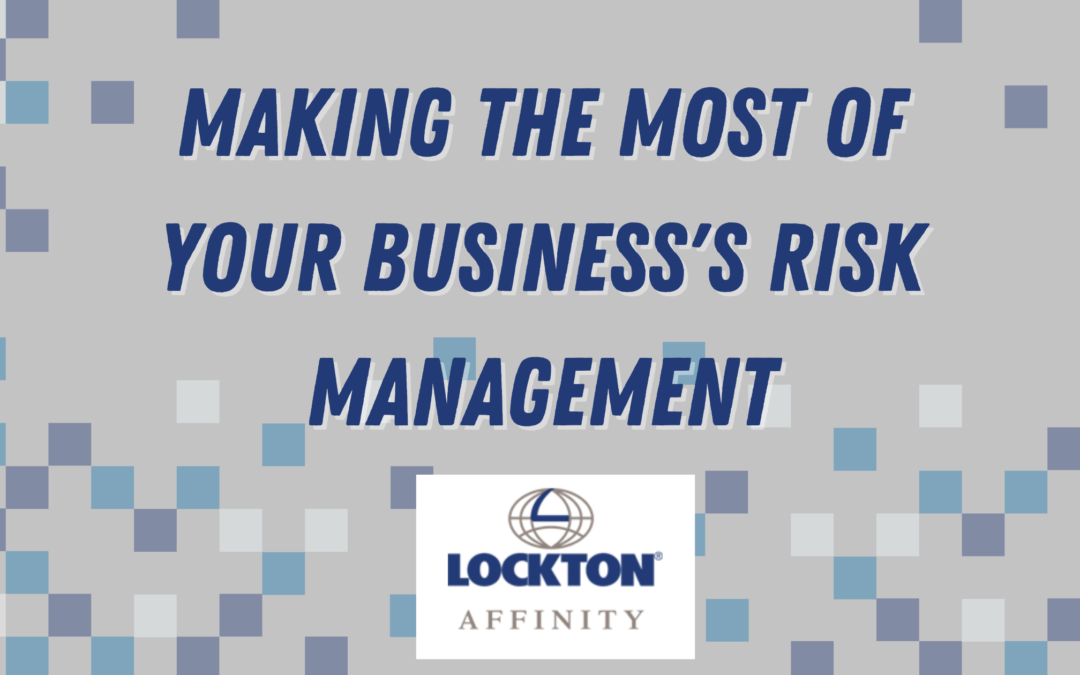A key component of running a business is managing risk. By evaluating, updating and maintaining your risk management program, you can help ensure the safety of customers and employees and reduce the chances of your business experiencing a serious accident or a liability lawsuit.
Developing a Risk Management Program for Your Business
A successful risk management program can protect your employees and customers from harm and your organization from associated costs. Because of the program’s importance, your organization’s leadership should hold the responsibility of the risk management program planning.
When implementing a risk management program, consider the following fundamentals:
- State the reasons for having the program. These objectives will determine the depth and scope of the program’s development.
- Write a policy statement and explain it to all employees. It should clearly outline the objectives and demonstrate the intentions in achieving an effective program.
- Assign responsibilities to all employees, as everyone should have some responsibility and involvement in the program.
- Implement an efficient communication system, allowing quick contact to organization leadership, as employees likely have valuable insight. A review of the program’s results will also help identify areas that need modification.
Completing these four fundamentals will establish a supportive foundation for other elements of your risk management program. Keep in mind that all elements of the program cannot be carried out at once. Building a successful program takes time and planning. The success of one phase will often lead to the initiation of the next logical phase.
Recommended risk management program elements
- Proper selection and personnel placement: Ensure the most qualified person is assigned.
- Establishing safety rules and procedures: Implement guidelines that employees are expected to follow. General and specific rules should be developed.
- Accident reporting, investigating and analyzing: Make provisions to ensure all accidents and injuries are reported immediately. Prompt investigation to uncover the real causes will allow for analysis and corrective action.
- Training: Develop a program to provide initial and continuous training for all employees.
- Inspections: Establish procedures to check regularly for unsafe conditions and unsafe acts within your organization.
- Emergency procedures: Implement procedures to follow, including first-aid treatment and handling serious injuries, fires or other natural disasters.
- Motivation: Keep your employees interested and continually involved in risk management efforts. This can include a safety committee, posters, handouts, incentive programs, etc.
Simple Strategies to Implement in Your Risk Management Program
- Don’t rush hiring. A thorough hiring process will ensure the employee is a good fit for your business and will likely reduce turnover in the long run.
- Tips: Pre-screen potential employees and hold one or even two interviews with the same person before hiring them.
- Minimize trips and falls. Slips, trips and falls make up most of all general industry accidents and cause approximately 15% of accidental deaths, second only to auto accidents.
- Tips: To prevent slips, trips or falls, remember to remove and reduce. Remove hazards by picking items off the floor, cleaning up any spilled liquids and avoiding extension cord use. Reduce risks by securing electrical cords to walls, regularly inspecting chairs and stools for damage, positioning furniture to have a clear traffic area, eliminating furniture with wheels and using wet floor signs.
- Implement driver guidelines. If your business owns a vehicle, implement policies and guidelines around acceptable drivers and behaviors while driving.
- Tips: All drivers should have a valid driver’s license, a clean driving record and should be banned from using their phone while driving.
- Prepare for Mother Nature. Implement severe weather plans so you can act quickly in the event of storm.
- Tips: For winter weather, obtain proof of insurance from the snow removal company and have your contract reviewed by legal counsel. Treat walkways and parking lots with salt or sand before, during and after a winter storm. Always inspect your building and lot after severe weather. Remove any debris, such as tree limbs or trash. As snow or rain is tracked into your building, keep floors clean and dry, and place wet floor signs where necessary.
- Assess safety signage. Your business may already have safety signage that helps keep customers and employees safe.
- Tips: Make sure signs are located at point of use and related directly to the hazard at hand. Reduce visual clutter and distraction by reducing the number of signs in a single area. Take down safety signs that are no longer needed. Replace any signage that is out-of-date, damaged or missing.
Find more risk management tips and information about available coverage to protect your business, through Lockton Affinity, the co-broker of the Elevanta insurance program. Lockton Affinity offers key coverage designed with your insurance requirements in mind. Contact the Lockton Affinity team to get started today.

